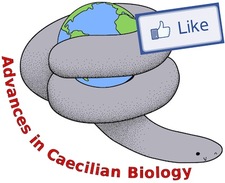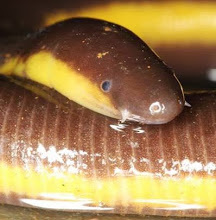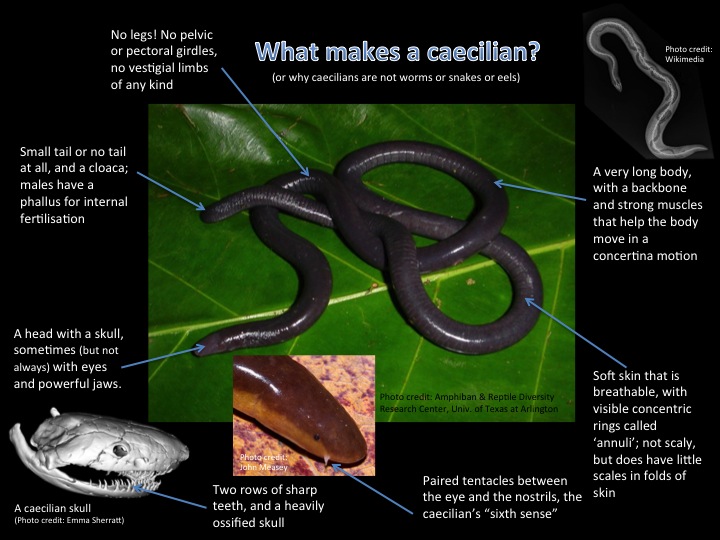Caecilian amphibians are one of three orders of Modern Amphibians (Gymnophiona, Anura, and Caudata). They superficially resemble snakes, earthworms and eels because they are legless, and have long slender bodies with visible concentric rings.
WE HAVE REACHED 214 SPECIES OF caecilians! Keep updated with all the species at amphibiaweb.org
Online Resources to find out more about Caecilian Amphibians
Sites and Blogs
oin us to learn more about current caecilian research at the Official Facebook Page for Advances in Caecilian Biology

Learn more about caecilian species at the Encyclopaedia of Life

A blog by Varad Giri on caecilians of India. Contains great teaching and identification resources. Researchers of Caecilian Amphibians*
* Compiled using Scopus and author recommendations. Not an exhaustive list. contact me if I have missed you off and want to be included here |
Caecilian fact fileCaecilians are found in moist, tropical regions of the world: Central and South America, Subsaharan Africa, India and Sri Lanka, The Seychelles, and Southeast Asia (up to the Wallace Line).
Caecilians are mostly terrestrial, burrowing underground in soil, or moving through leaf litter on the forest floor. Some species are semi- or fully aquatic, living in freshwater streams and lakes. Learn about caecilians in this informative article by Roberta Kwok. Download the TimeTree of Life Article about caecilians here. F.A.Qs They look like worms! Do caecilians have a backbone? - Yes! Caecilians are vertebrates, meaning they have a stiff rod running the length of their body. They also have a skeleton, that comprises a skull, a backbone with ribs, and sometimes a very small tail. The do not have legs, nor do they have the pectoral or pelvic girdles. Are caecilians slimey? - No. Their skin, like other amphibians, is not scaly like reptiles and fish, or hairy like mammals, but smooth and porous (breathable). It is soft to touch, and can be moist, but not unpleasant slimey feeling. How big are they? - Caecilian species range in size from tiny (Idiocranium russeli is only 10cm long) to very long (Caecilia thompsoni up to 2m). Some are very thin (Boulengerula fischeri) while others are very fat (Atretochoana eiselti) |

Latest Tweets From the Official Twitter Page
|
Videos
|
Excerpt from BBC Life in Cold Blood narrated by David Attenborough
An informal but informative video about amphibians (featuring Atretochoana the lungless caecilian!)
|
Celebrating the 200th Species of Caecilian, watch this video and song dedicated to all that is Gymnophionan...
Information on the newest caecilian family
(see publications for scientific publication) |
See how a terrestrial caecilian moves...
...and an aquatic caecilian swims
|

